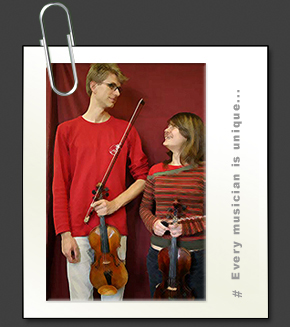“Probably the most interesting idea that I got from all this is that I was not the problem. I only needed to find the way to solve the problem.” – research student
This research was a pilot study of a new educational model that strove to give each participating musician the equipment choices, skills and information needed to become his/her own expert. During our research we found a clear connection between problems in playing technique and ill-fitting equipment. Combining store-bought and specially designed equipment to fit the body type and playing style of each student improved comfort and technique. Musicians were trained in how to use the equipment and to alter it, or to get it altered, to fit their bodies. Lessons in the Alexander Technique began the process of unlearning cramped playing habits while learning how to sustain improved habits.
We began to define a new conservatory subject, an interdisciplinary approachto teaching that supports the work done in private violin and viola lessons. Instead of leaving the student to wrestle alone with the equipment and the resulting physical problems, this team approach, with student musician, violin or viola teacher, Alexander Technique teacher, and equipment technician working together, helps free the student to learn and play up to his/her potential.
Benefits to musicians included elimination of pain and discomfort and improved playing technique, as recorded on video and audio tapes and reported by the students and their teachers. Two years after the conclusion of the educational pilot, participating musicians continue to use the equipment developed for them (and with them) during the research.
As a result of the study, a new set of violin and viola students are coming for equipment fittings on their own initiative and at the recommendation of their teachers; it is now considered normal to have equipment individually fitted. Students often elect to combine equipment changes with lessons in Alexander Technique. Planning is underway to incorporate results of this research into the curriculum of the Faculty of Music at the Utrecht School for the Arts.
A government grant will support further equipment development. A series of chin rests to suit different body types will be manufactured by Wolf Music Products in spring 2007. We are currently developing a series of hand-made shoulder rests for further study.

